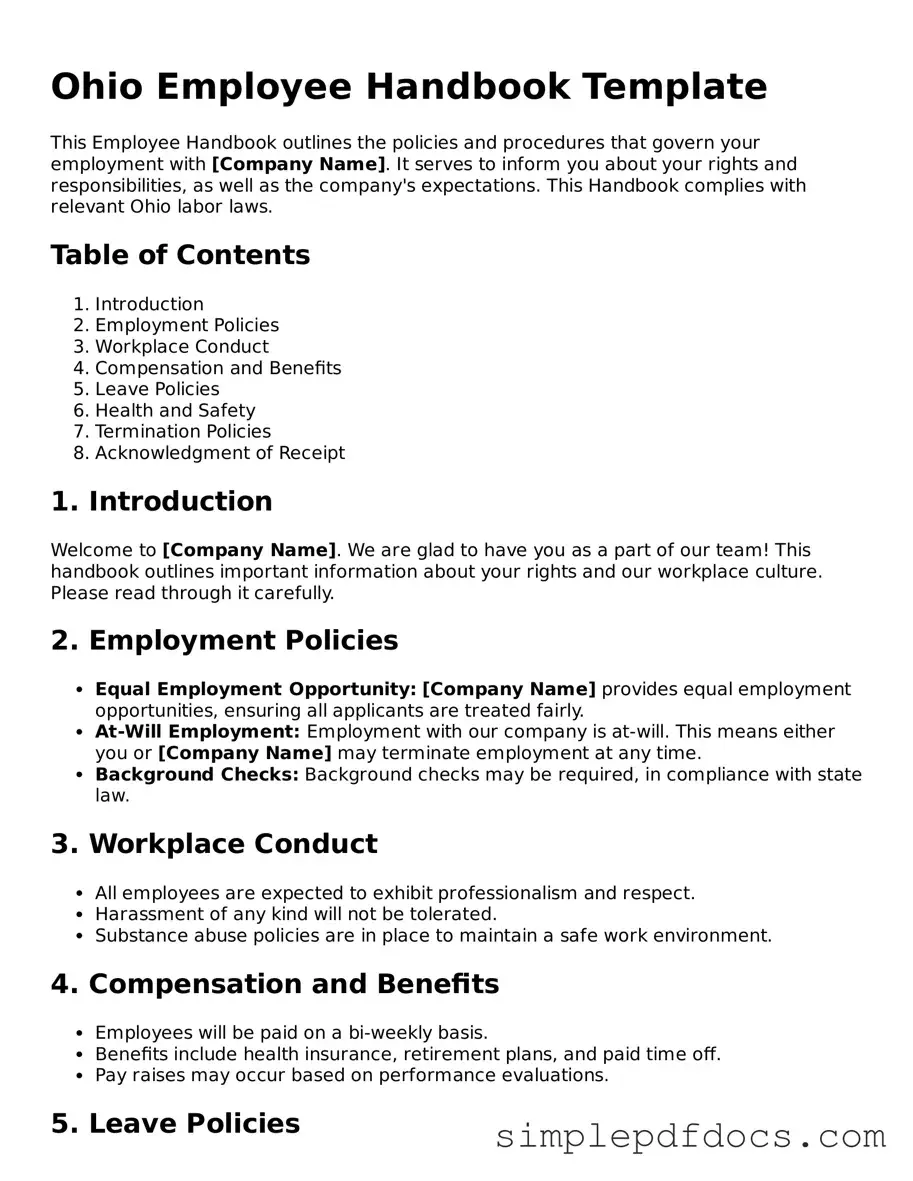Legal Employee Handbook Document for the State of Ohio
The Ohio Employee Handbook form serves as a crucial document that outlines the rights, responsibilities, and expectations of both employees and employers within the state. This handbook not only provides essential information regarding workplace policies but also fosters a clear understanding of the organizational culture. By establishing guidelines, it helps ensure a harmonious work environment for all parties involved.
Get Document Here
